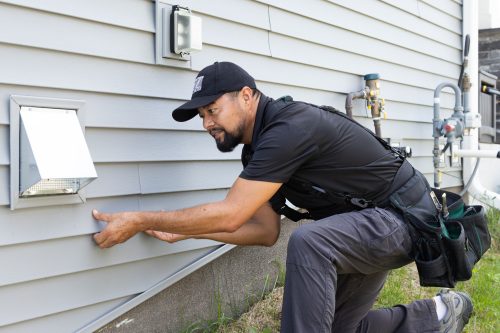One of the biggest challenges home sellers face is unexpected problems that arise during the home inspection. Home sellers can eliminate all of these surprises with pre-listing inspections. Knowledge is power, and pre-listing inspections put that power in the seller’s hands by eliminating surprises.
THESE ARE NOT TRUTH-IN-HOUSING EVALUATIONS
While many municipalities in the Minneapolis and Saint Paul areas require a Truth-In-Housing evaluation before listing a home for sale, a pre-listing inspection is quite different. With a Truth-In-Housing evaluation, we only inspect the stuff that a city wants us to look at. This is a cursory list of things that’ll get the evaluator in and out of the home within about an hour, and the final report is quite basic.
Pre-listing inspections, on the other hand, are very similar to a home inspection. We inspect the home exactly as we would for a potential buyer, but our client is the owner, not the buyer. The only significant difference is that we typically don’t test kitchen and laundry appliances during pre-listing inspections. If there’s an issue with the operation of an appliance, the owner always knows about it. We won’t find anything wrong with the appliance that the owner doesn’t already know about.
DISCLOSURE = NO SURPRISES
The beauty of these inspections is that the seller has the opportunity to repair, replace, or upgrade anything the home inspector identifies before offering their home for sale. If the seller chooses not to do any of those things, they can provide the inspection report to the home buyer before an offer is written on their home. When this happens, any post-inspection price and repair negotiations are eliminated. There are no surprises. Everything is on the table, and the home’s price reflects its condition. This can make the house more attractive to potential buyers by giving them better peace of mind before writing a purchase offer.
Here are two potential scenarios:
SCENARIO 1: NO PRE-LISTING INSPECTION
A buyer writes an offer on a home, the offer is accepted, and the purchase is contingent upon an inspection. A home inspection is performed five days later, and several issues are identified. Many things can happen at this point: the buyer might accept the home as-is, ask the seller to fix things, ask the seller to discount the price, or cancel the purchase. I discuss these possibilities at length in my blog posts titled Negotiations after the inspection and Does the seller need to fix this?
The bottom line is that what happens next is a big unknown, and real estate agents tell me that this can be one of the most frustrating parts of the purchase process for sellers. When a seller is asked to fix stuff, what are their options? They can simply say no and hope the deal still goes through, but if it doesn’t, what now? They’ve wasted a lot of time having their home off the market, and they need to put it back on the market and disclose the defects that were identified, which caused their sale to fall apart. Nobody wins.
SCENARIO 2: THE SELLER HAS A PRE-LISTING INSPECTION
In scenario two, the home sellers hire a home inspector to do a pre-listing inspection. The home inspector identifies several issues with the home, and the seller takes their time in getting the items corrected or repaired. There’s no time crunch because the property isn’t under contract, so the sellers can take their time getting the work done by the people they really want to work with, or doing the repairs themselves.
They confidently list their home, and look forward to the buyer’s home inspection, knowing that nothing is going to come up that they didn’t already know about. Assuming they hired a good home inspector to do their pre-listing inspection, of course. If there are items the seller decides not to fix, they might list them on a disclosure form so any potential buyer knows what they are buying and there are no negotiations later in the buying process.
PRE-LISTING CONSULTATIONS VS INSPECTIONS
A pre-listing consultation is similar to a walk-through consultation, but it’s done for the home seller. For this service, we walk through a potential seller’s home with them and point out all the stuff that home buyers get whipped up about. The homeowner is responsible for taking notes, as we do not produce a written report. The main difference between this and a walk-through consultation for the homebuyer is that we do more. We’ll walk the roof, open the attic, inspect the electrical panel, and test the HVAC equipment… you get the point. It’s not as involved as a complete home inspection, but we’re looking at a lot of stuff. The cost of a pre-listing consultation is half that of a complete home inspection.
Oh, and one last thing: make sure you hire an excellent home inspector. A home inspector who misses or glosses over problems won’t be doing you any favors.


No responses to “Pre-Listing Inspections vs Pre-Listing Consultations”
No comments yet.
RSS feed for comments on this post. TrackBack URL
Leave a Reply